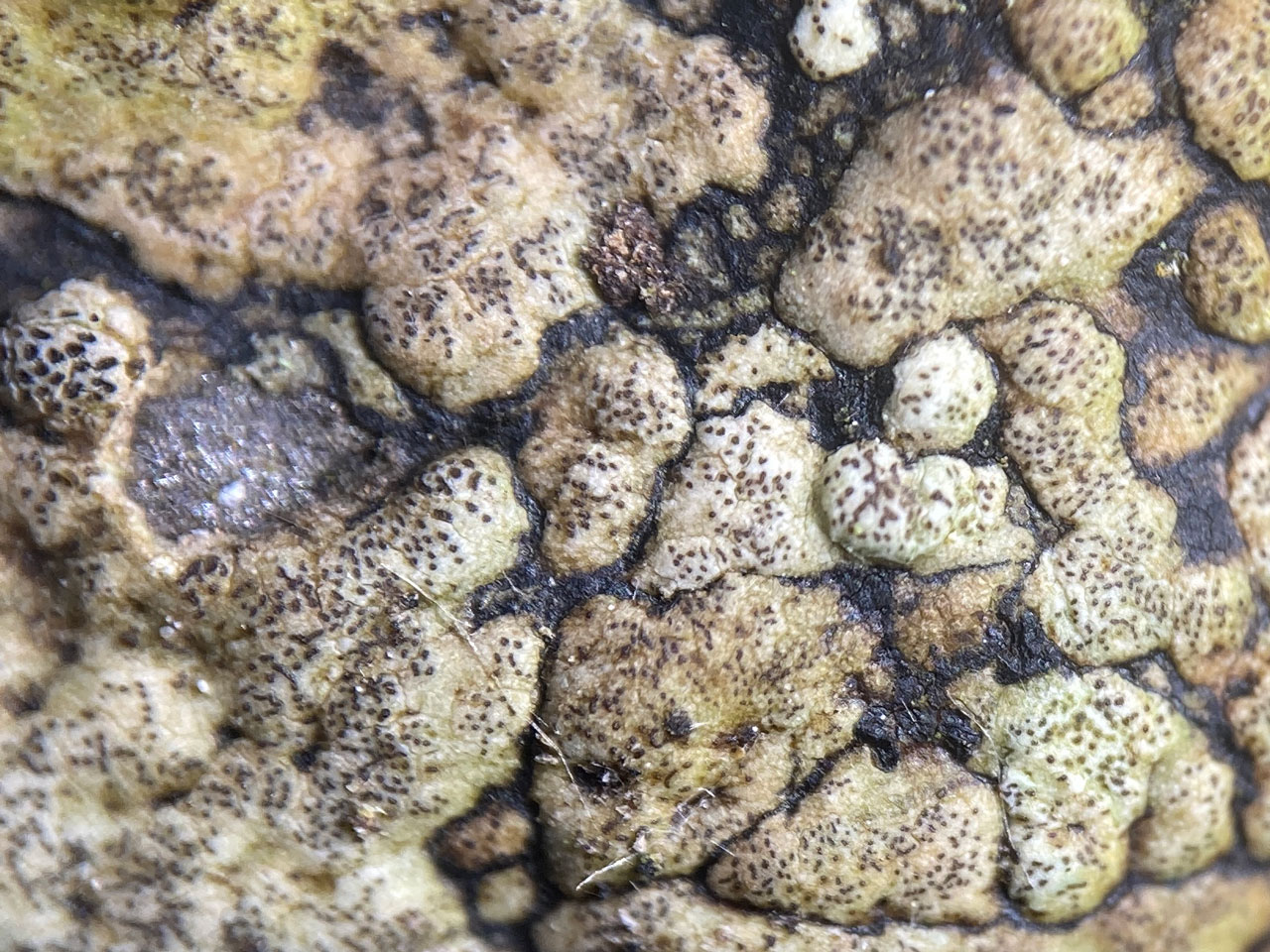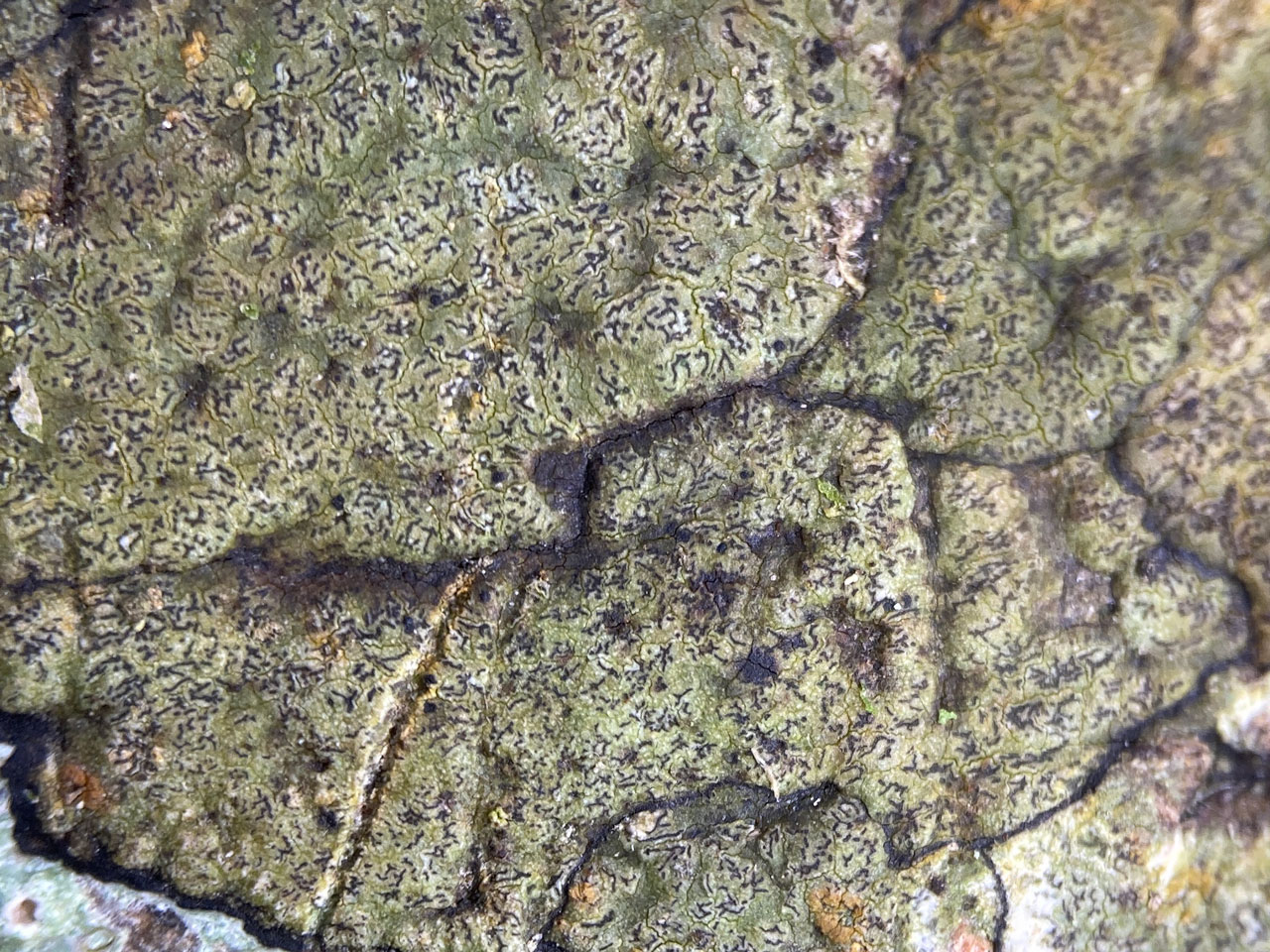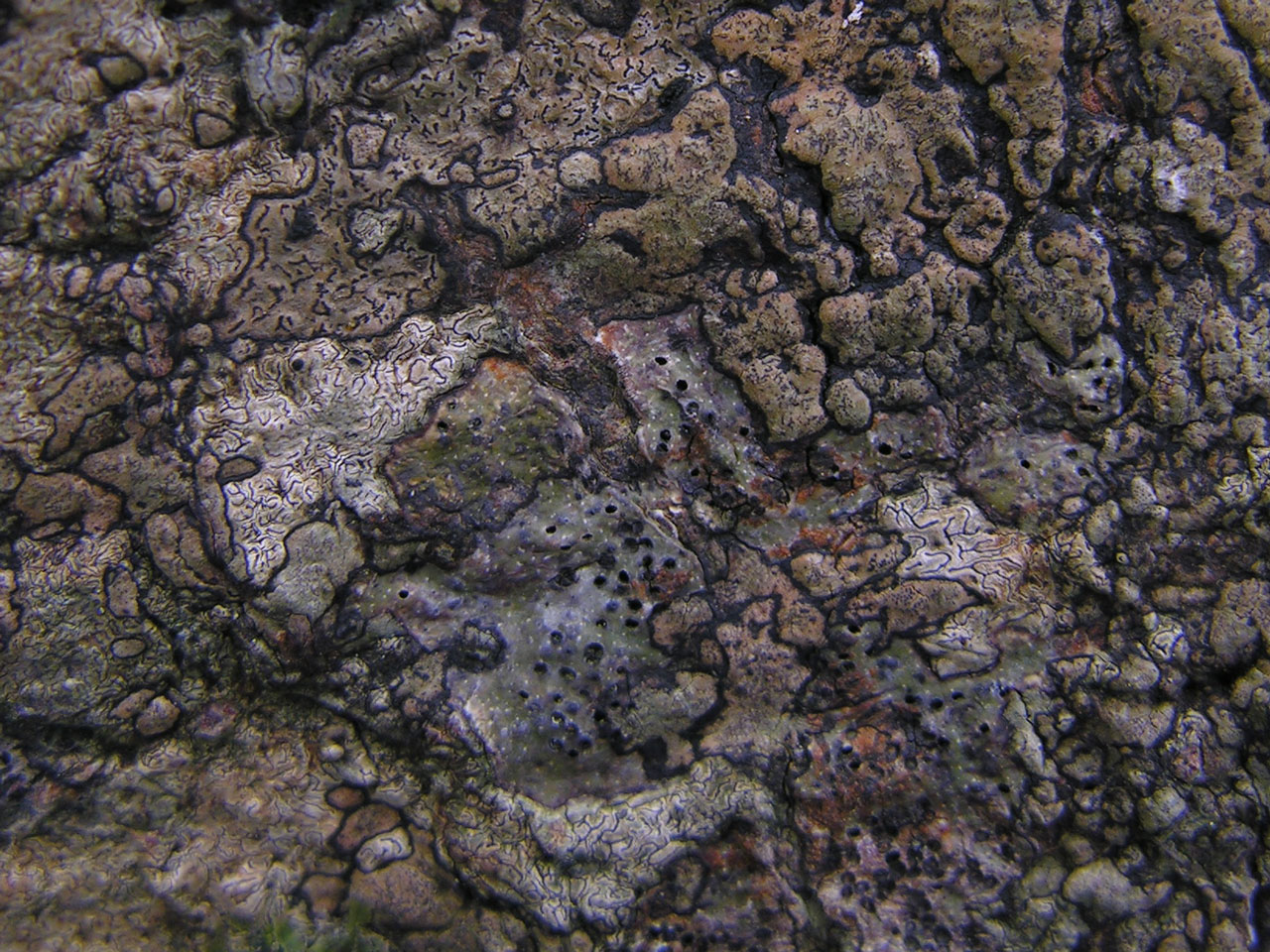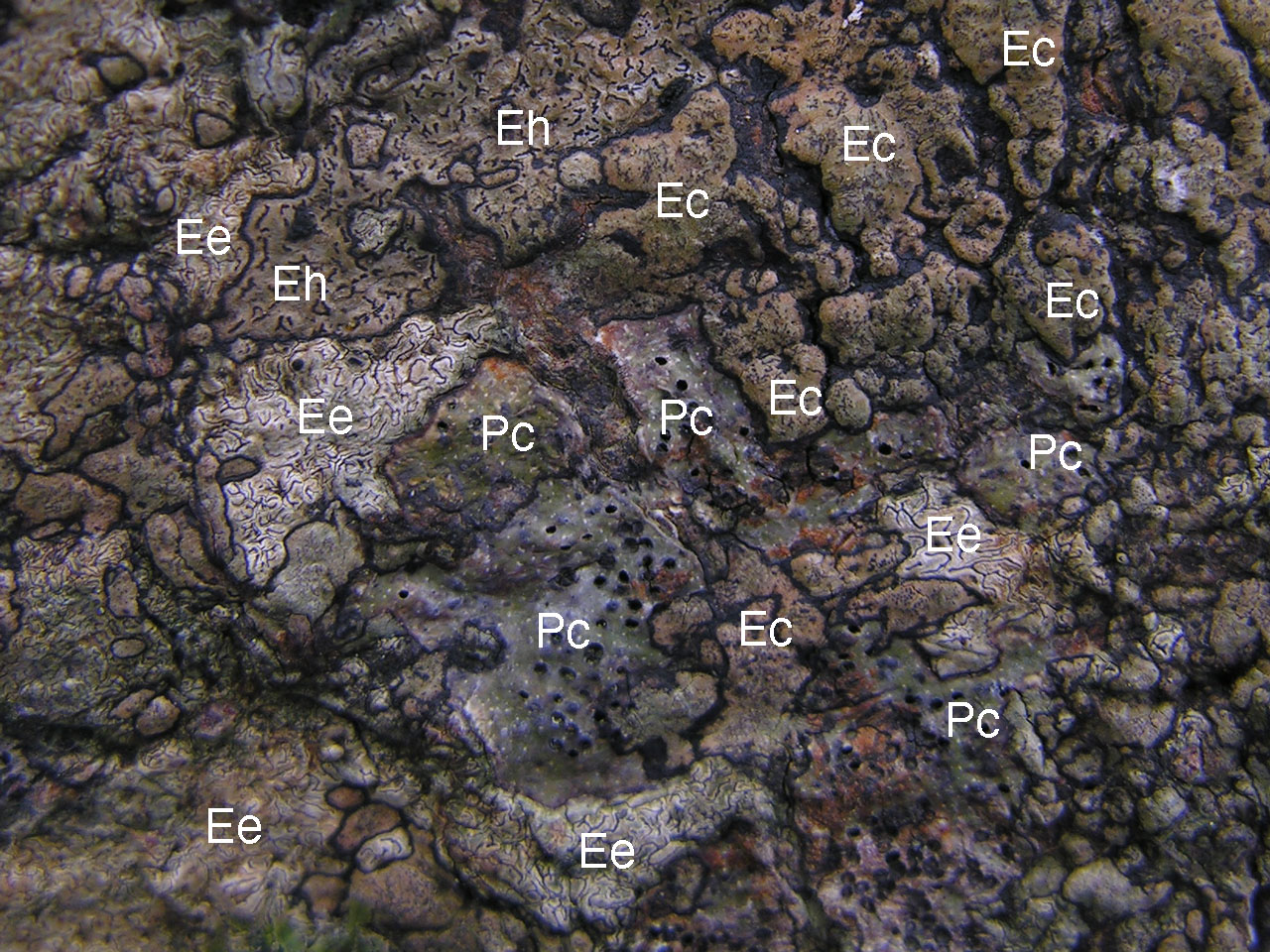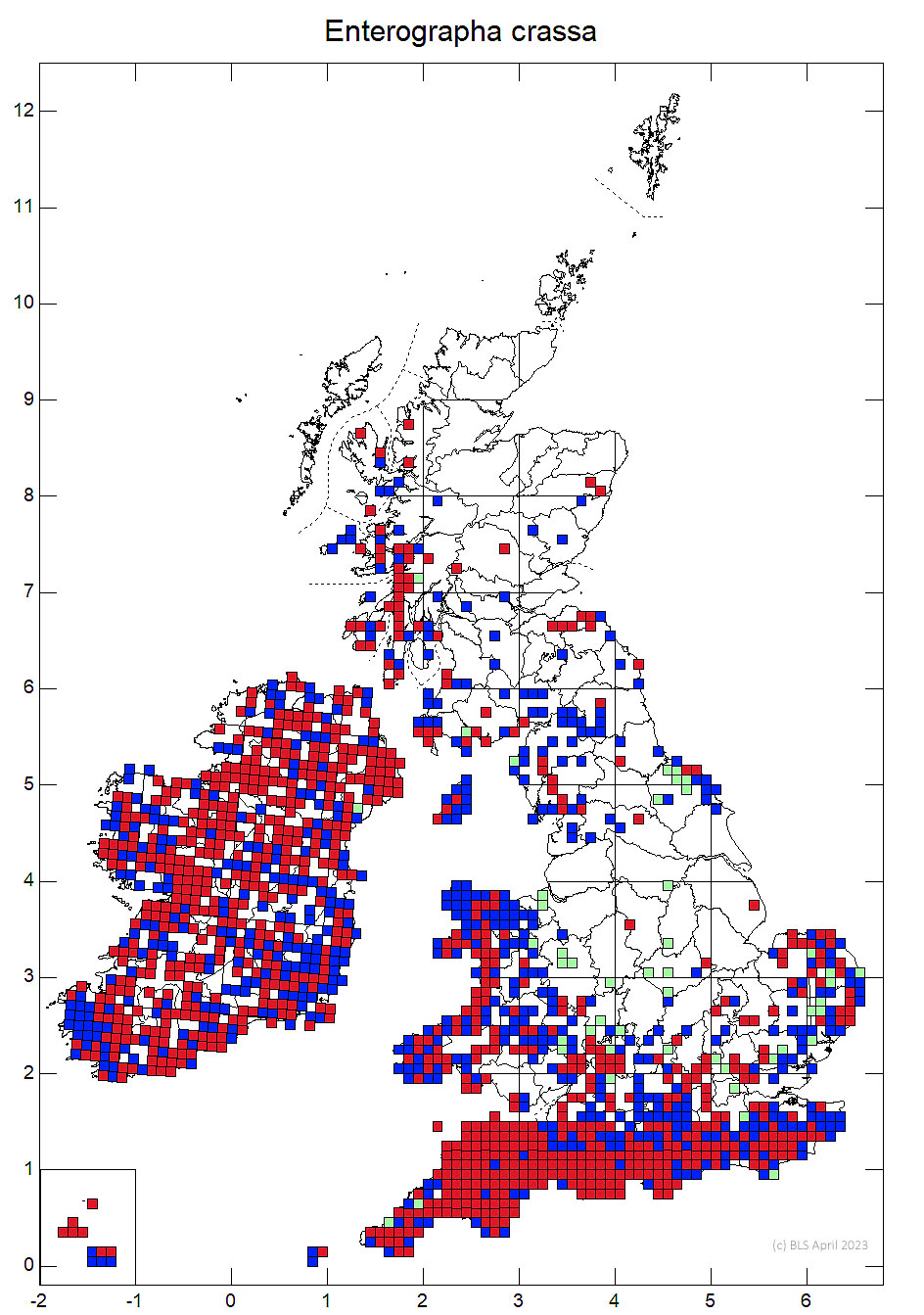Enterographa crassa
A distinctive species often dominating large areas of trunk in pure mosaics of small interlocking waxy brown thalli, spotted with small dot like apothecia, which often line up in dendritic patterns. Very common in south western and Irish woodlands on humid shaded trunks. Rare to the north and east and an old woodland species in western Scotland. Similar species of Enterographa occur but are all much less frequent, see E. hutchinsiae, E. elaborata and Enterographa pitardii.
Thallus thin to thick, continuous, smooth or faintly rimose-cracked, even or becoming coarsely and unevenly low-warted, often forming wide-spreading complex mosaics, pale grey to pale brown, dark brown or dark olive-green, ± refractive with closely packed granules, K–; prothallus between the thalli, thin, persistent, dark brown to black. Apothecia usually very numerous, brown-black, deeply immersed, without a rim, minutely punctiform or ± broadly elliptical in surface view, 0.1–0.25 × 0.05–0.1 mm, often in dotted or thread-like lines, the lines sometimes merging into irregular lirellae; epithecium pale to dark brown, semi-opaque, non-granular; paraphyses 0.8–1 μm diam. Asci 8-spored. Ascospores 28–38 × 4–6 μm, 4- to 6(-7)-septate, straight to slightly curved. Pycnidia 40–50 μm diam., frequent; conidia 4–6 × 0.9–1.2 μm. Thallus C–, K–, K/UV+ mauve, Pd–, UV– (confluentic acid).
The shape of the apothecia and thallus colour are both very variable. Some populations on old trees with a typically pale thallus and longer branched lirellae with a regular form (not to be confused with forms where the lines of dotted apothecia have merged into irregular little branched lirellae), for which the name E. venosa (Pers.) A. Massal. (1860) has been used, are referable to E. hutchinsiae not E. crassa (Ertz et al. 2009). See E. hutchinsiae and E. elaborata for differences. Ertz et al. (2009) also showed, somewhat unexpectedly that E. crassa is more closely related to E. zonata that E. hutchinsiae.
On shaded bases and trunks of mature or senescent broad-leaved trees and shrubs, especially in woodlands, rarely on very shaded, siliceous rock, tolerant of low illumination and moderate levels of pollution. In shaded humid woods it can completely dominated large areas of trunk in pure mosaics of small interlocking thalli.
The initially lichenicolous Tylophoron hibernicum (Arthoniaceae) can be found establishing on and spreading over Enterographa crassa on the bases of old trees in S.W. Britain & Ireland

Locally abundant. S. & S.W. England, Wales, N. England, W. Scotland, throughout Ireland.
Cannon, P., Aptroot, A., Coppins, B., Ertz, D., Sanderson, N., Simkin, J. & Wolseley, P. (2021). Arthoniales: Roccellaceae, including the genera Cresponea, Dendrographa, Dirina, Enterographa, Gyrographa, Lecanactis, Pseudoschismatomma, Psoronactis, Roccella, Schismatomma and Syncesia. Revisions of British and Irish Lichens 16: 1-22.
Ertz, D., Miadlikowska, J., Lutzoni, F., Dessein, S., Raspe, O., Vigneron, N., Hofstetter, V. & Diederich, P. (2009). Towards a new classification of the Arthoniales (Ascomycota) based on a three-gene phylogeny focusing on the genus Opegrapha. Mycological Research 113: 141–152.
Text by Neil A. Sanderson based on Cannon et al (2021)

